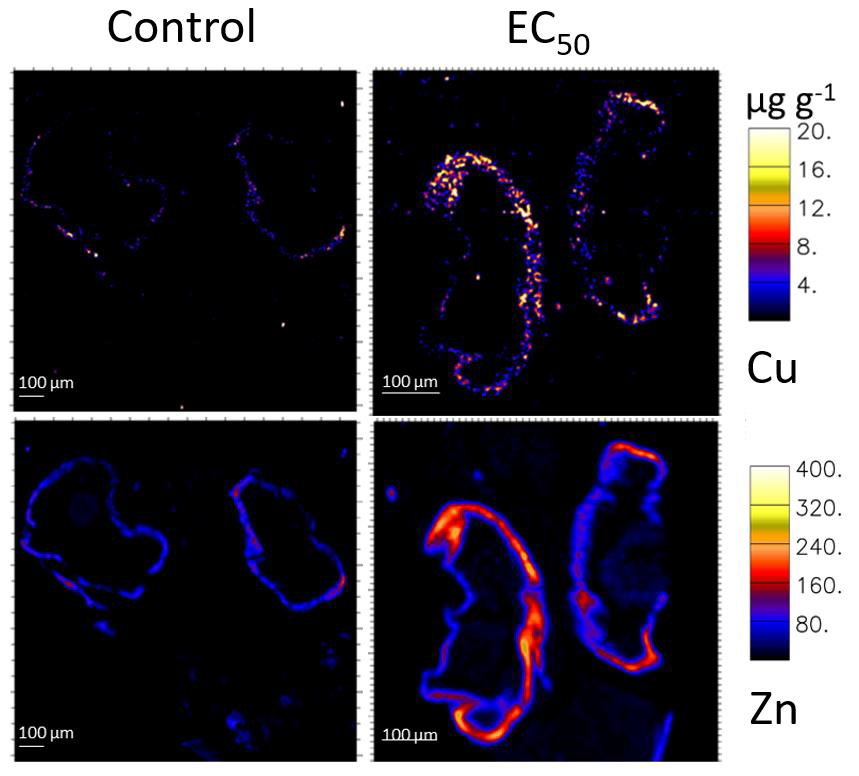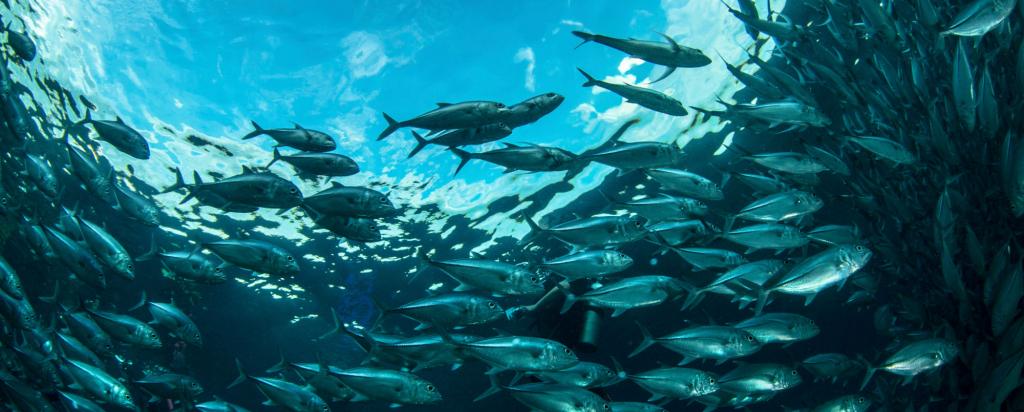

The impact of copper on a native fish
Copper (Cu) is a harmful contaminant in freshwater systems, the concentration of which is being increased by human activity. The impact of elevated copper on fish, particularly during the larval development stage, is not well understood. This work identified the eye organ of a native fish, Mogurnda adspersa, as being particularly sensitive to increased Cu concentrations.
Our research

PIXE imaging of Purple Spotted Gudgeon eye tissue from a Control animal (no added Cu) and an animal exposed to high concentrations of Cu (EC50). The top row shows the accumulation of Cu while the bottom row shows the distribution of Zn.
Understanding the sublethal effects of environmental contaminants is important for informing guidelines and regulations.
Determining sublethal effects in early life stages such as sacfry and larval forms is particularly important as the consequences for development and growth, reproduction and overall survival can be much greater.